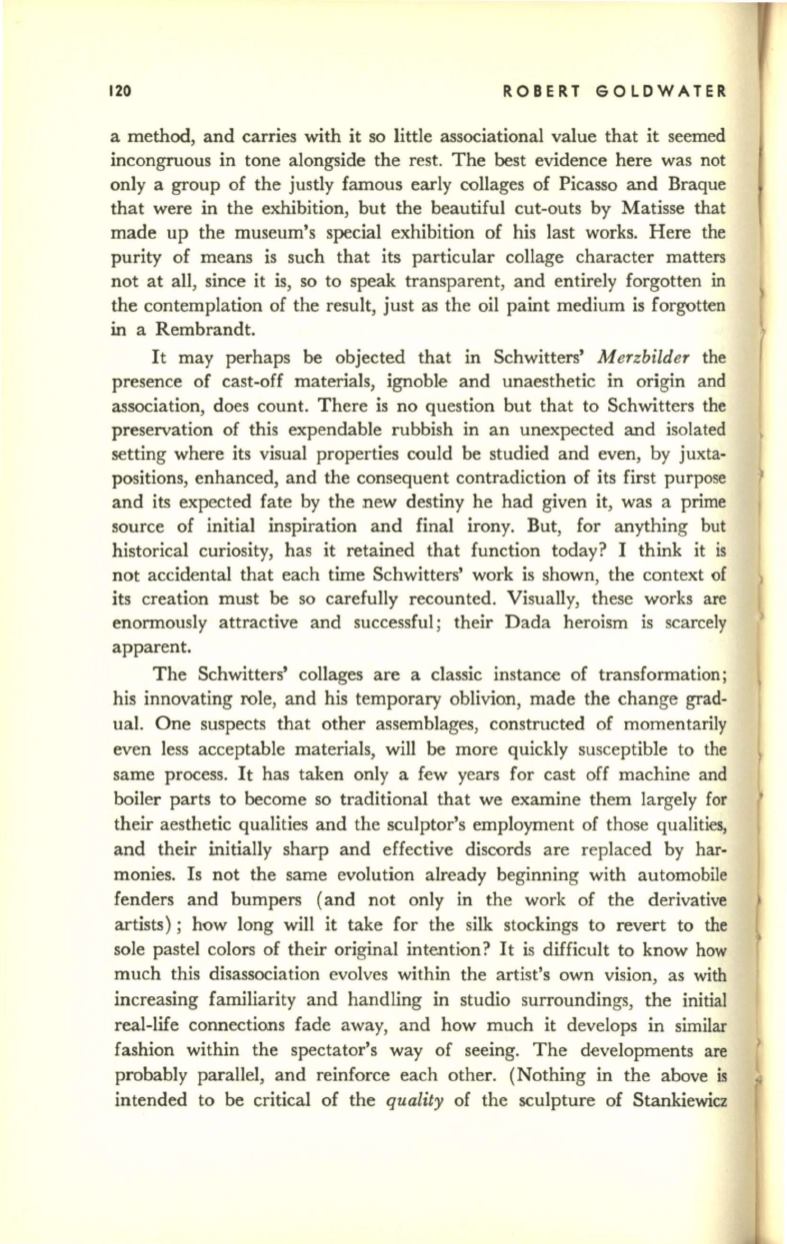
120
ROBERT GOLDWATER
a method, and carries with it so little associational value that it seemed
incongruous in tone alongside the rest. The best evidence here was not
only a group of the justly famous early collages of Picasso and Braque
that were in the exhibition, but the beautiful cut-outs by Matisse that
made up the museum's special exhibition of his last works. Here the
purity of means is such that its particular collage character matters
not at all, since it is, so to speak transparent, and entirely forgotten
in
the contemplation of the result, just as the oil paint medium is forgotten
m a Rembrandt.
It may perhaps be objected that in Schwitters'
Merzbilder
the
presence of cast-off materials, ignoble and unaesthetic in origin and
association, does count. There is no question but that to Schwitters the
preservation of this expendable rubbish in an unexpected and isolated
setting where its visual properties could be studied and even, by juxta–
positions, enhanced, and the consequent contradiction of its first purpose
and its expected fate by the new destiny he had given it, was a prime
source of initial inspiration and final irony. But, for anything but
historical curiosity, has it retained that function today? I think it is
not accidental that each time Schwitters' work is shown, the context of
its creation must be so carefully recounted. Visually, these works are
enormously attractive and successful; their Dada heroism is scarcely
apparent.
The Schwitters' collages are a classic instance of transformation;
his innovating role, and his temporary oblivion, made the change grad–
ual. One suspects that other assemblages, constructed of momentarily
even less acceptable materials, will be more quickly susceptible to the
same process. It has taken only a few years for cast off machine and
boiler parts to become so traditional that we examine them largely for
their aesthetic qualities and the sculptor's employment of those qualities,
and their initially sharp and effective discords are replaced by har–
monies. Is not the same evolution already beginning with automobile
fenders and bumpers (and not only in the work of the derivative
artists); how long will it take for the silk stockings to revert to the
sole pastel colors of their original intention? It is difficult to know how
much this disassociation evolves within the artist's own vision, as with
increasing familiarity and handling in studio surroundings, the initial
real-life connections fade away, and how much it develops in similar
fashion within the spectator's way of seeing. The developments are
probably parallel, and reinforce each other. (Nothing in the above
is
intended to be critical of the
quality
of the sculpture of Stankiewicz


